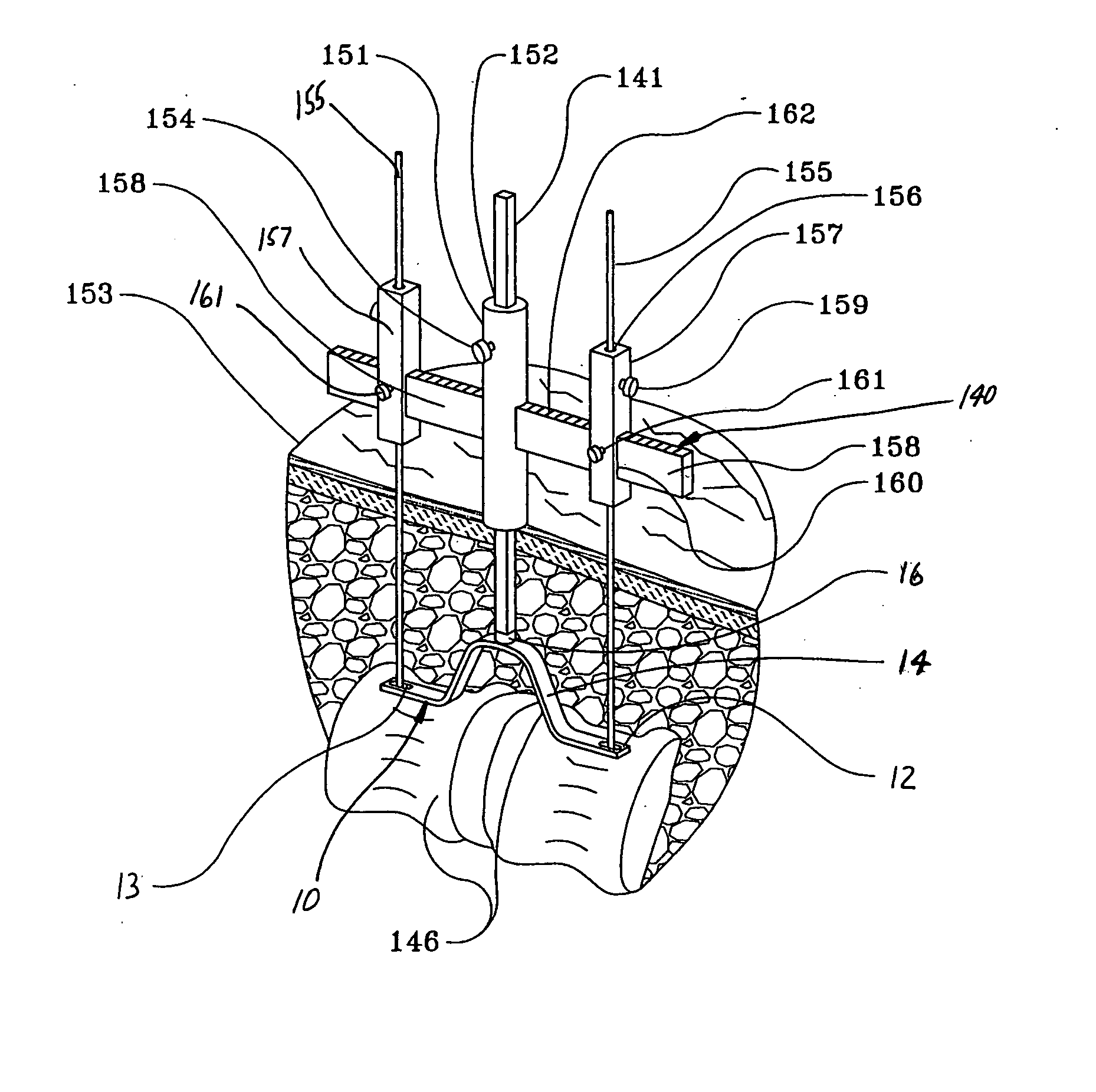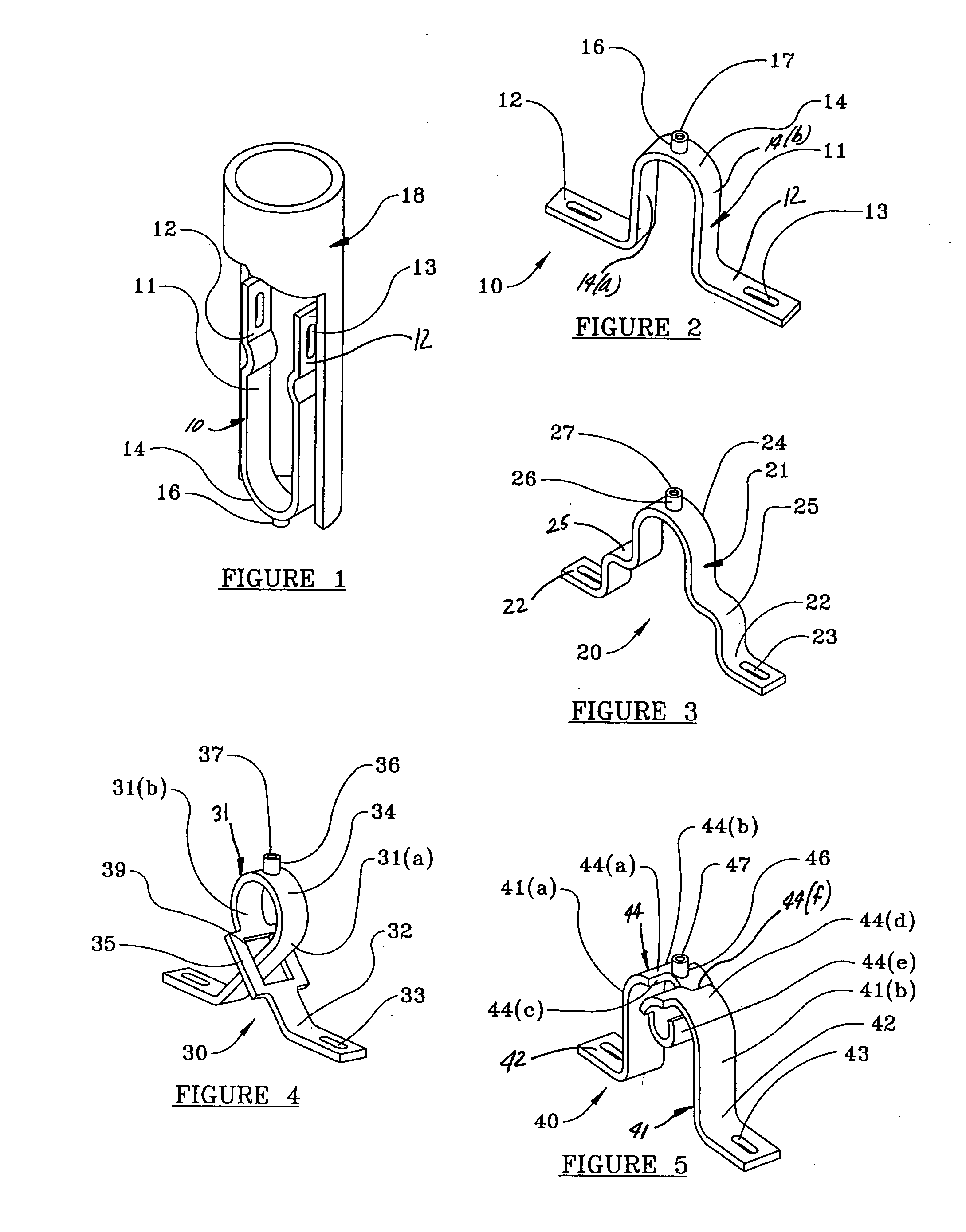Artificial spinal joints and method of use
- Summary
- Abstract
- Description
- Claims
- Application Information
AI Technical Summary
Benefits of technology
Problems solved by technology
Method used
Image
Examples
embodiment 20
[0063]FIG. 3 illustrates an alternate flexible rod / bar device embodiment 20 in its unconstrained shape. In this embodiment, in addition to flexible “V” shaped center bridge portion or member 24, secondary rounded outwardly protruding shoulders or steps 25 are formed on rod body 21 between the ends of member 24 and feet 22 which define slots 23 allowing movement of feet 22 about the axis of center portion 24 and about the axis of both of the steps 25 when the rod 20 is bent and constrained within the interior of cannula 18. Pin 26 is similar to pin 16 and defines a threaded bore 27.
embodiment 30
[0064] Another flexible rod / bar device embodiment 30 which functions like a spring is shown in FIG. 4 in its unconstrained shape. In this embodiment, rod body 31 defines a first flexible, elongate rod leg segment 31(b) having a widened lower portion 35 defining a generally rectangularly shaped through slot 39 and a second flexible rod body leg segment 31(a) which loops downwardly and extends through the slot 39 in leg segment 31(b). Rod leg segment 31(b) is widened or thickened to compensate for slot 39 and maintain the strength and durability of rod leg segment 31(b). Feet 32 with slots 33 extend outwardly from the distal ends of the rod leg segments 31(a) and 31(b) respectively. The leg segments 31(a) and 31(b) together define a generally circular center rod member 34. Pin 36 is similar to pin 16 and defines a threaded bore 37 extending upwardly from the top face of member 34.
embodiment 40
[0065]FIG. 5 shows another flexible bar embodiment 40 in its unconstrained shape. In this embodiment, body 41 includes a flexible center bridge portion 44 defining a first rod body leg segment 41(a) having an end portion 44(a) with a widened shoulder 44(b) and cut-out 44(c) for maintaining the width, strength and durability of body leg segment 41(a). Center bridge portion 44 also defines a body leg segment 41(b) having an end portion 44(d) defining a widened shoulder 44(e) and cut-out 44(f) also to maintain the width, strength and durability of body leg segment 41(b). Cylinder / pin 46 with threaded bore 47 can be formed as part of or attached to the top of the portion 44(a) of body leg segment 41(a), as shown, or alternatively to the top of the end portion 44(d) of body leg segment 41(b). Cut-outs 44(c) and (f) also serve to limit the extent to which flexible bar 40 can be expanded or compressed and, hence, limits the angular deflection of one vertebra with respect to the other. Feet...
PUM
 Login to View More
Login to View More Abstract
Description
Claims
Application Information
 Login to View More
Login to View More - R&D
- Intellectual Property
- Life Sciences
- Materials
- Tech Scout
- Unparalleled Data Quality
- Higher Quality Content
- 60% Fewer Hallucinations
Browse by: Latest US Patents, China's latest patents, Technical Efficacy Thesaurus, Application Domain, Technology Topic, Popular Technical Reports.
© 2025 PatSnap. All rights reserved.Legal|Privacy policy|Modern Slavery Act Transparency Statement|Sitemap|About US| Contact US: help@patsnap.com



